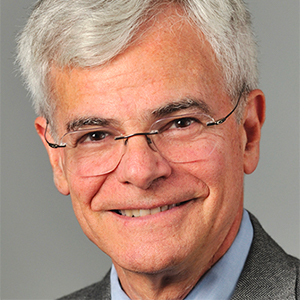Gary Felsenfeld (1929–2024)
Gary Felsenfeld, whose research at the National Institutes of Health revealed the dynamic nature of chromatin and its role in gene expression and epigenetic regulation, died on May 1, 2024, at the age of 94.
Known for his wry sense of humor, dedicated mentorship and relentless pursuit of fun in the lab, Felsenfeld harnessed physical chemistry to measure protein–DNA interactions quantitatively and to define how nucleic acids form ordered structures. He may be best known for his identification of insulator proteins capable of blocking the crossfire of gene activation. This work helped unlock the full potential of gene therapy to prevent, treat and cure human diseases, including autoimmune conditions, heritable metabolic diseases and cancer.
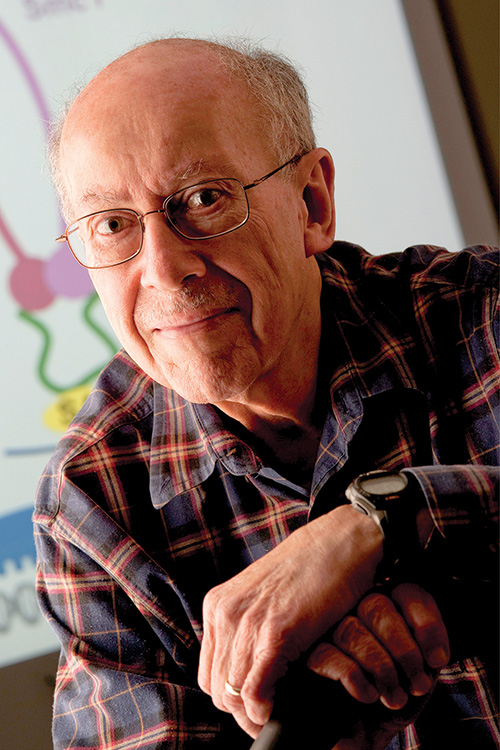
During his 62-year career at the NIH, Felsenfeld and his colleagues in the Laboratory of Molecular Biology, housed in what is now the National Institute of Diabetes and Digestive and Kidney Diseases, accelerated the evolution of molecular biology in the 1960s and 1970s with discoveries that included numerous phase separation properties of biological polymers and the role of GATA-1 in modulating chromatin structure.
Later in his career, well into his 80s, Felsenfeld turned his attention to the chromatin structure of the insulin locus and its relationship to insulin gene expression and secretion, all for the pursuit of pure basic research. As many of its sites are implicated in Type1 or Type 2 diabetes, this more recent work revealed previously unknown regulatory pathways of significant clinical importance.
Felsenfeld retired in 2023 and assumed emeritus status. He went to the lab regularly until he was 90 when hip replacement and pancreatic cancer surgery slowed him down and the COVID-19 pandemic hit. Still, he worked from home, lucid and insightful till the end. And through it all, he had fun. Lots of fun.
"I stayed at the NIH so I could go into the laboratory every day," he told interviewer Helen Mancini of Stuyvesant High School, his alma mater, shortly before his death. "I was training postdoctoral fellows, but I was always there in the lab, and I had my own lab bench. It was just like play."
A strange kid
Felsenfeld was born on Nov. 18, 1929, in New York City, a self-described strange kid who said he got hooked on science at age 8 or 9 when he visited an allergist who let him see his hand in a fluoroscope. Dangerous in retrospect, yes, but certainly exciting, he recalled. His parents bought him a Gilbert Chemistry Set, and the danger continued as he'd monopolize the single bathroom in their Upper West Side apartment to conduct experiments, some ending in unexpected booms. Felsenfeld also became interested in photography around this time; at summer camp, he hung out in the darkroom developing film instead of playing games outside.
At Stuyvesant High School, a specialized public high school for math and science, Felsenfeld found, for the first time, lots of other strange kids who loved science. He graduated as valedictorian, and in 1947, his senior year, he entered the Westinghouse Science Talent Search with a project that attempted to create an x-ray film that could be used in daylight. He placed in the top 10 and won a trip to Washington, D.C., to meet President Harry Truman and visit the NIH. There, he saw a lab in Building 2 that he described as grubby and depressing, not fit for working in; 13 years later, he launched his career from the same building.
Becoming a scientist
Felsenfeld’s parents expected him to become a medical doctor; they saw science as merely a hobby. The Westinghouse trip introduced him to working scientists and the possibility of graduate school to earn a doctorate.
"That was news to me," he said in a 2019 interview. “I remember at one point when I was studying chemistry, a friend of the family said, 'What does that mean? You'll run a drug store when you're finished?' That was not an uncommon response."
Felsenfeld went to Harvard College ostensibly to prepare for medical school. But he began to understand that medicine wasn't for him. And he didn't find biology very intellectual, he said. A new chemistry teacher at Harvard, Leonard Nash — who became legendary with his high-energy lectures and playful antics — reset his focus on chemistry.
Felsenfeld met weekly one-on-one for the next three years with John Edsall, one of the first people to apply physical chemistry to biological problems. Edsall became the editor of the Journal of Biological Chemistry in 1958. He confided to Felsenfeld that his father, who had been the dean of Harvard Medical School, forced him to go to medical school, which he found disappointing. He encouraged Felsenfeld to pursue a graduate degree if he was really interested in research.
Felsenfeld applied to Caltech for chemistry and to Harvard Medical School, and he was accepted by both. His parents were overjoyed about Harvard, in particular, given the quotas on Jews at the time. Felsenfeld talked to a Harvard Medical School professor who said he couldn't do much science as a medical doctor.
"If you want to do science, don't come here,” he told Felsenfeld. “Go to graduate school."
Felsenfeld took a chance on Caltech and Linus Pauling. It was 1951, and Pauling, who would win the Nobel Prize in Chemistry in 1954, was among the most famous scientists alive and as eccentric as he was brilliant. He had just ended his stint as president of the American Chemical Society and had given a notorious speech in which he said that anyone who chooses a career in chemistry should take a vow of poverty. Felsenfeld reasoned this was an attractive proposition, akin to a monastic life dedicated to ascetic simplicity and the pursuit of knowledge. However, federal funding for science ramped up significantly in the 1950s.
Pauling would hatch brilliant ideas at a breakneck speed and have his secretary type them out on little slips of yellow paper to pass around among faculty and students. He assigned Felsenfeld to work with a chemist, Verne Schumaker, on the structure of diazomethane, a violently explosive compound. When a vapor of the stuff exploded on him, peppering him with glass shrapnel, Felsenfeld was shaken. After getting stitched up, he asked Pauling to be his direct advisor. Pauling generally didn't accept first-year students, but perhaps he couldn't resist the wording of the request: "Professor Pauling, I want to stop doing research and start working for you!"
Pauling smiled and said what he did was indeed research. He had Felsenfeld work on ferromagnetism, the quantum mechanical theory, with a hunch that this could be important for immunology. It wasn't, but Felsenfeld enjoyed the disciplined work.
Pauling further inspired Felsenfeld to apply physics and chemistry to biological problems but would not recommend him for postdoctoral work in biology after his third and final year at Caltech. Instead, he insisted that Felsenfeld get an additional year in chemical theory. He recommended Felsenfeld to Charles Coulson, a theoretical chemist at Oxford University. There, Felsenfeld worked on the structure of the chlorocuprate anion, which he successfully predicted using crystal field theory.
"My last theoretical work," he said.
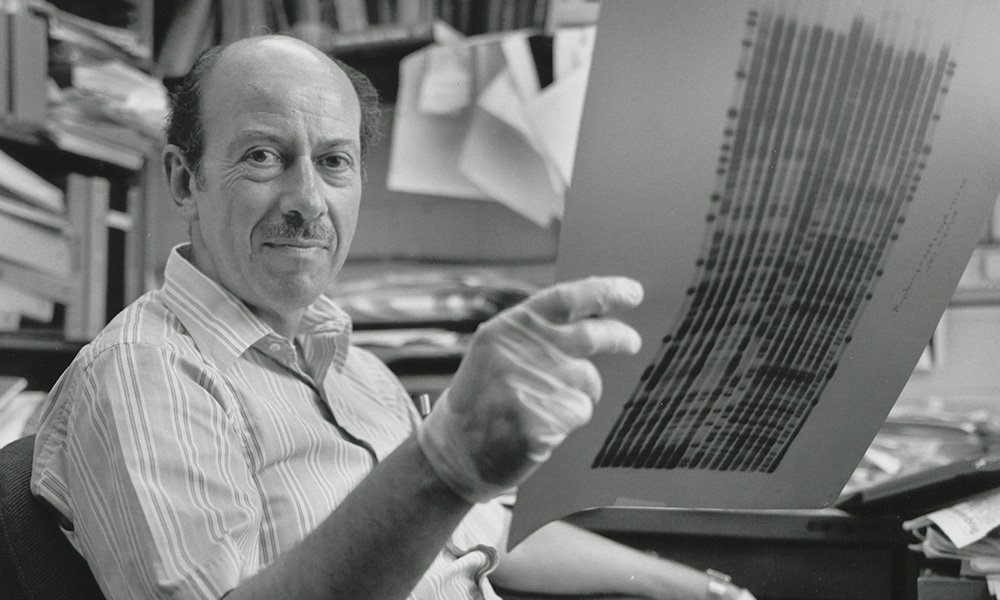
Joining the NIH
After a year in England in the mid-1950s, Felsenfeld still had to contend with the military draft. The U.S. was no longer engaged in active combat in Korea, but the draft board told Felsenfeld he'd be recruited as a private in the Army unless he could obtain a commission. He was commissioned in the U.S. Navy and worked a short while at the Naval Medical Research Institute, across the street from the NIH in Bethesda, Maryland.
Felsenfeld reconnected with Alex Rich, whom he knew at Caltech and Oxford. Rich went on to fame at MIT for his discovery of left-handed Z-DNA, among other things. At this time, Rich was at the National Institute of Mental Health, and he offered Felsenfeld a position in his lab. He was soon joined by David Davies, whom he had befriended at Caltech. The two became lifelong friends and collaborators.
Felsenfeld and Davies worked on nucleic acid structure. Rich was friendly with Severo Ochoa, who would share the 1959 Nobel Prize in Physiology or Medicine with Arthur Kornberg (who had just departed the NIH) for their discovery of the mechanisms in the biological synthesis of DNA and RNA. So, Gary and David worked on the structure of Poly(A) with Poly(U), specifically. It was 1957. In their mixing, they chanced upon the discovery of the first triple-stranded helical nucleic acid molecule, latter dubbed, by a Russian colleague, the F.D.R. triplex for Felsenfeld, Davies and Rich. This was one part Poly(A) and two parts Poly(U). The discovery showed how diverse nucleic acid structures can be.
"You have to be very lucky to start your career with something like that," Felsenfeld told the NIH Record in 2005. "It keeps you going through the slower days that always follow."
Felsenfeld had few slow days. He left the NIH for the University of Pittsburgh in 1959, having fulfilled his military obligation, but returned in 1961 to become a founding member of the Laboratory of Molecular Biology. Other founding members included one of us (Gellert, a physical chemist); David Davies; Bruce Ames, a microbial geneticist; Terrell Hill, a theoretician; Harvey Itano, co-discoverer of sickle cell hemoglobin; Todd Miles, an organic chemist; Gordon Tomkins, a biochemist; and Michael Yarmolinsky, a bacterial geneticist.
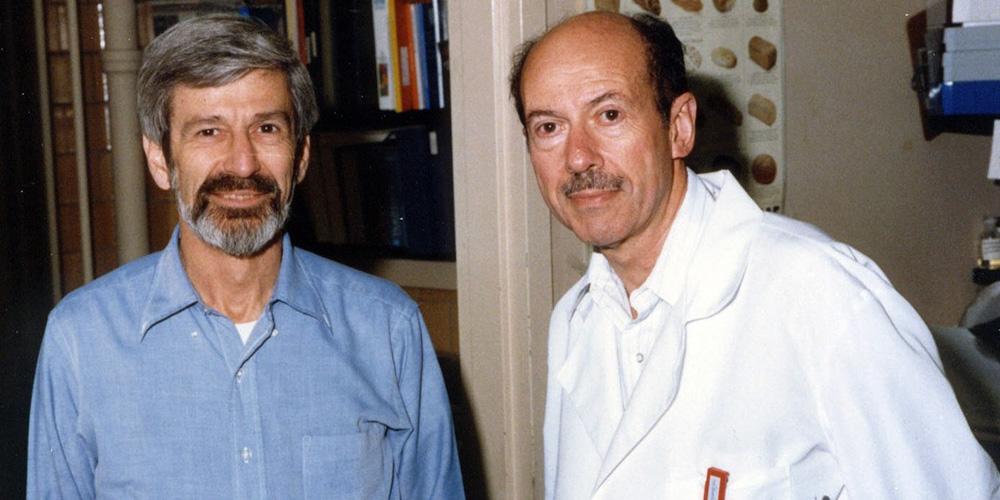
Tomkins was the lab chief, and he convinced DeWitt "Hans" Stetten, the scientific director of the institute — then called the National Institute of Arthritis and Metabolic Diseases — to allow him to recruit a team of early-career scientists to work on just about anything they pleased. Stetten took the bait. For years the group worked productively as sort of a commune, with each member rotating as laboratory chief for a year, hardly encumbered by any administrative duty.
Seminal work on chromatin
In the early 1970s, Felsenfeld turned his attention to the composition of chromatin and its role in transcription. He was among the first to realize the inherently repressive nature of nucleosomes and how they might influence gene activity. Over the following decades, he published many papers describing nucleosome structure — for example, his demonstration that a central tetramer of histones H3 and H4 is the organizing complex of the nucleosome — as well as the higher-order structure of chromatin and the question of how RNA polymerase transcribes through a nucleosome.
At a time when obtaining pure and stable materials for the study was difficult, Felsenfeld chose to study a specific set of genes, the beta-globin gene cluster, and he developed chicken erythroid cells as a model system. This cluster includes a set of genes encoding different forms of the beta-subunit of hemoglobin that are expressed at different stages during chick development, as well as in human development. He analyzed the individual elements that control the developmentally regulated expression of the globin genes. He identified a set of nuclease-sensitive sites within the beta-globin locus, which he showed correspond to nucleosome-free promoters, enhancers and a locus control region, and are bound by sequence-specific transcription factors. He went on to identify many of these transcription factors, including the famous erythroid-specific GATA-1 transcription factor, simultaneously with the Orkin laboratory. GATA-1 has since been shown to play a significant role in remission achievement in leukemia.
Enhancer blocking of the beta-globin locus
One crucial question that Felsenfeld asked was, what prevents transcription enhancers from activating the wrong gene, given their promiscuity and long-range activity? He addressed this by searching for enhancer-blocking elements at the boundaries of the beta-globin locus. He hypothesized that regulatory elements block enhancer action if placed between an enhancer and a promoter, which he termed "insulators."
Felsenfeld and colleagues used the chicken beta-globin locus as a test system. They demonstrated that the locus contains an insulator element at the upstream boundary of the locus relative to the genes. They showed that insertion of the putative insulator element between an enhancer and a reporter gene prevents the enhancer from activating the reporter gene.
Felsenfeld observed that the insulator is nucleosome-free, a characteristic of regulatory elements that bind sequence-specific regulatory transcription factors. He surmised that the insulator is also bound by sequence-specific regulatory transcription factors, and he identified and purified the transcription factor CTCF as the crucial sequence-specific factor that binds to the chicken beta-globin insulator and is necessary and sufficient for its activity. He later showed that methylation of a CTCF-dependent boundary element controls imprinted expression of the mouse insulin-like growth factor 2 gene, Igf2.
This work established the existence of DNA insulators that act as boundaries and enhancer-blockers in vertebrates and that the CTCF transcription factor is the key to their activities. Before these papers were published, our understanding of the chromatin organization of vertebrate chromosomes was limited to low-resolution structural studies showing that they are organized into chromatin loop domains. This work has influenced subsequent studies on mammalian gene regulation and the development of new strategies for gene therapy of human disease.
Felsenfeld was an elected member of the National Academy of Sciences since 1976, a member of the American Academy of Arts and Sciences, a fellow of the American Association for the Advancement of Science and an associate member of the European Molecular Biology Organization. In 2016, Columbia University awarded him the Louisa Gross Horwitz Prize.
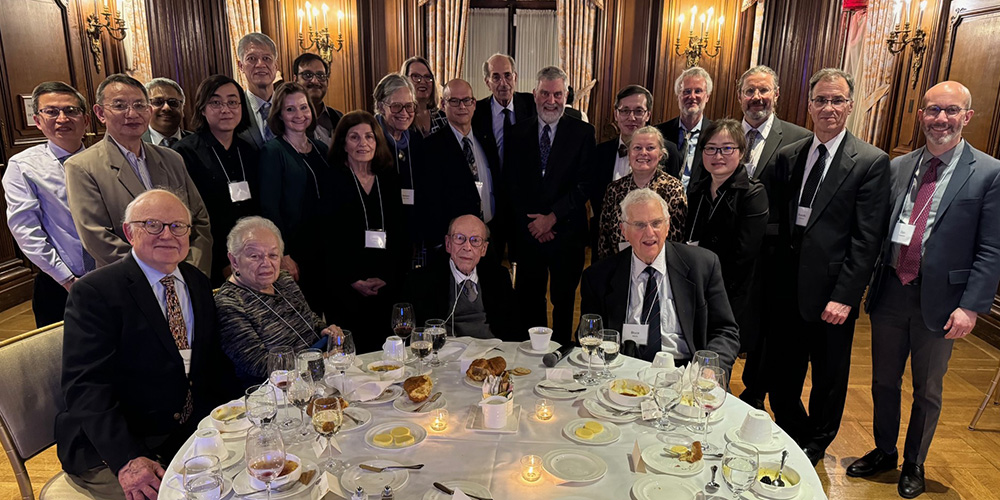
Mensch at the bench
A quintessential NIH scientist, Felsenfeld kept company with other greats. In January 2024, more than 25 of his colleagues, many of them past trainees, gathered in Washington, D.C., to honor his career and swap stories. One of those in attendance was Richard Axel, co-recipient of a 2004 Nobel Prize, who said Felsenfeld kept him out of serious legal trouble when he was a postdoc in Felsenfeld’s lab.
Felsenfeld and Axel worked well together. However, Axel often came to work too late to find parking. He'd park anywhere, sometimes even on the grass, and racked up hundreds of dollars in parking tickets. One day, the authorities came to arrest him, but Felsenfeld's wit and generosity settled the matter, and Axel got his parking tickets paid off.
Axel was only one of many distinguished scientists who benefited from Felsenfeld’s personal mentoring style and sharp intellect. Others include Howard Cedar, now professor emeritus at Hebrew University and a co-recipient with Felsenfeld of the Horwitz Prize; Barbara Sollner–Webb, professor emerita at Johns Hopkins University School of Medicine; Michael Zasloff, professor at Georgetown University and serial entrepreneur; Gordon Ginder, professor at Virginia Commonwealth University; Beverly Emerson, professor emerita at Salk Institute; and several senior investigators who remained at the NIH, including Dan Camerini–Otero, Marc Reitman, Jay Chung and David Clark.
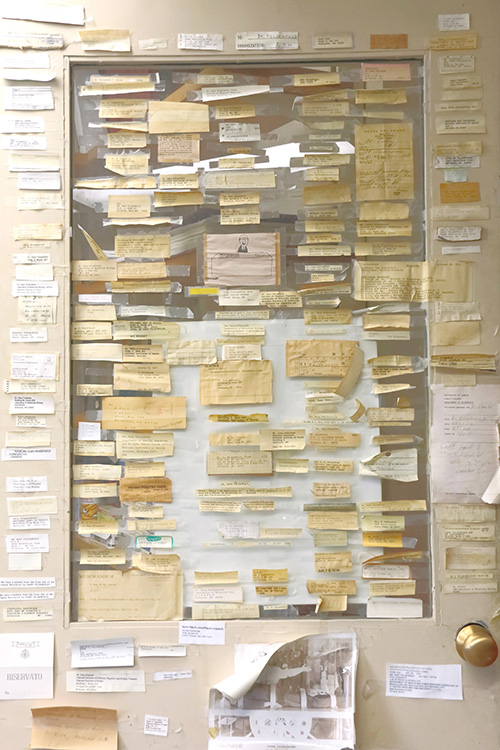
Many NIH colleagues remember that Felsenfeld was deeply interested in them, their lives, and their families, and never made himself the center of attention. He was a strong supporter of women in science right from the start. His many postdoctoral trainees remember his concern for their well-being and his willingness to provide whatever accommodations were needed to enable their success in science.
One recurring anecdote is about a door that followed Felsenfeld during his time at the NIH. As noted, he thought NIH Building 2 was a real dump when visiting as a high school senior. He labored there for years, though, until he moved in the 1990s to Building 5. Felsenfeld brought all his lab equipment over there — along with his door. Pasted on the door were decades' worth of misspellings of his name on letters he had received: Felzenfeld, Felsenfled, Gelsenfeld and so on. It was a doorway into his sense of humor: Felsenfeld classified the misspellings into point mutations, frameshift mutations, insertions, deletions and translocations.
Felsenfeld was a loving husband of nearly 68 years to his wife, Naomi, and a devoted father to Sara, Adam and Dan. He was also an adoring grandpa to eight wonderful children and a delighted great-grandpa to one more.
Family members told us Gary believed that talent was meaningless without a little luck, persistence, and a lot of hard work in pursuing ideas that you find exciting. He embraced science, music, literature, travel, nature, archaeology and art with equal enthusiasm. And he lived his last weeks with humor and determination, surrounded by his books and by those who loved him.
With gratitude to Gary for the life he lived and the reminiscences he left as an oral history and to his many friends and colleagues who contributed to this remembrance.
Enjoy reading ASBMB Today?
Become a member to receive the print edition four times a year and the digital edition monthly.
Learn moreGet the latest from ASBMB Today
Enter your email address, and we’ll send you a weekly email with recent articles, interviews and more.
Latest in People
People highlights or most popular articles

Mydy named Purdue assistant professor
Her lab will focus on protein structure and function, enzyme mechanisms and plant natural product biosynthesis, working to characterize and engineer plant natural products for therapeutic and agricultural applications.

In memoriam: Michael J. Chamberlin
He discovered RNA polymerase and was an ASBMB member for nearly 60 years.

Building the blueprint to block HIV
Wesley Sundquist will present his work on the HIV capsid and revolutionary drug, Lenacapavir, at the ASBMB Annual Meeting, March 7–10, in Maryland.

In memoriam: Alan G. Goodridge
He made pioneering discoveries on lipid metabolism and was an ASBMB member since 1971.

Alrubaye wins research and teaching awards
He was honored at the NACTA 2025 conference for the Educator Award and at the U of A State and National Awards reception for the Faculty Gold Medal.

Designing life’s building blocks with AI
Tanja Kortemme, a professor at the University of California, San Francisco, will discuss her research using computational biology to engineer proteins at the 2026 ASBMB Annual Meeting.

